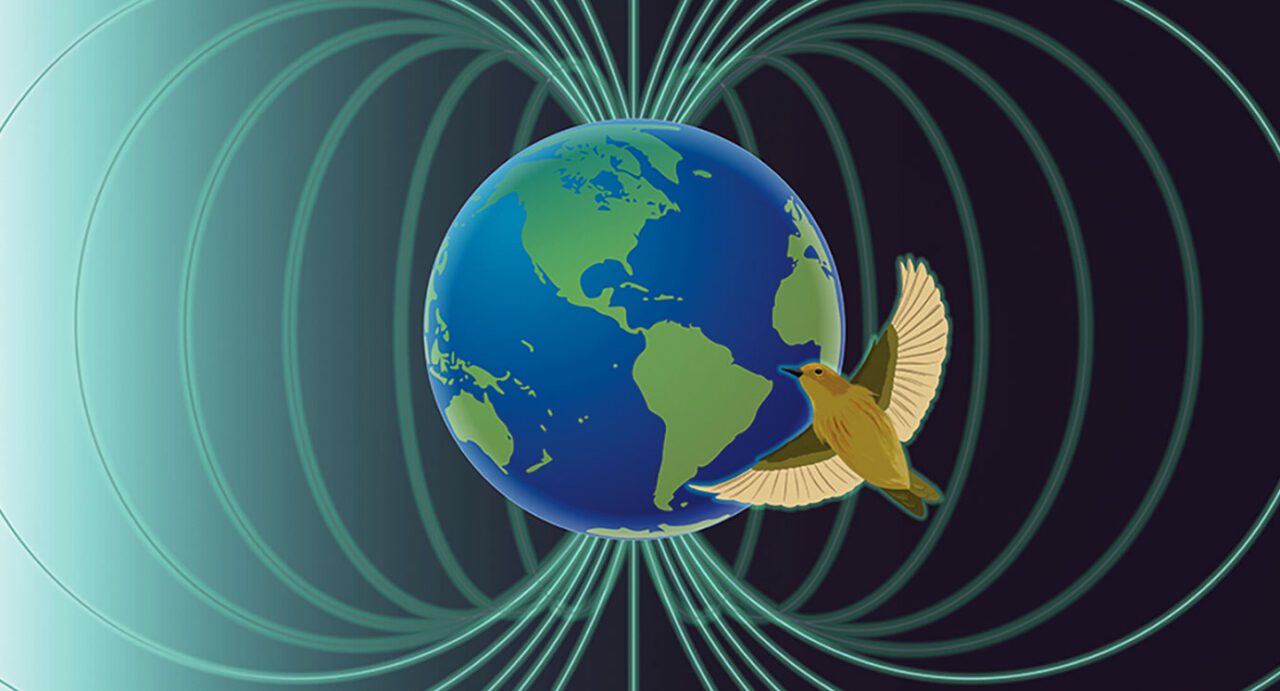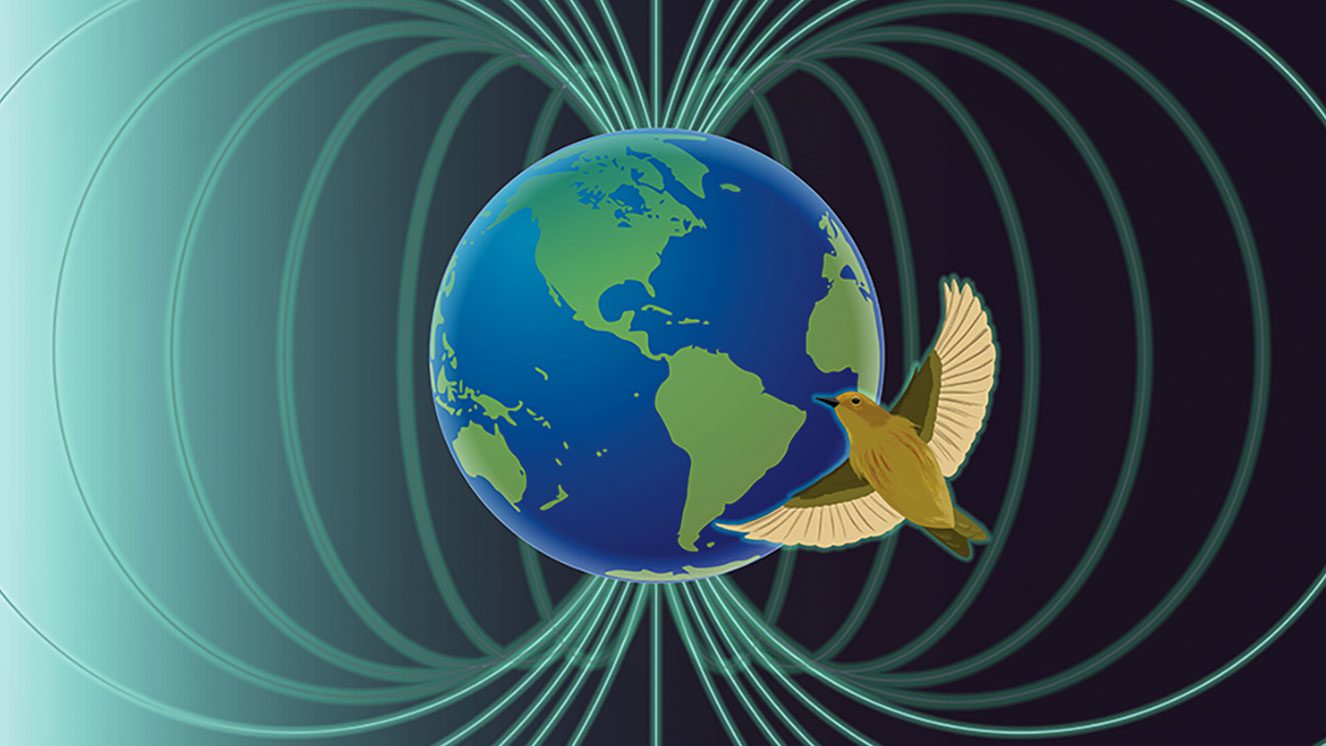
From the Autumn 2023 issue of Living Bird magazine. Subscribe now.
Birds have an uncanny ability to navigate long distances along specific routes, but once in a while, things go wrong: a Townsend’s Warbler that nested in the Pacific Northwest migrates east instead of south in October and ends up along the Massachusetts coast; an Indigo Bunting, which should be headed from the Midwest to Mexico in the fall, shows up in southern California.
Vagrancy, as this phenomenon is called, adds zest and unpredictability to birdwatching. Weather events such as strong storms can blow a bird off track and likely cause many wayward bird journeys, but a new study published in the journal Scientific Reports in January shows that disturbances in the Earth’s geomagnetic field may also play a big role in causing birds to veer off course.
Birds use magnetoreception—a sort of sixth sense for detecting the Earth’s magnetic field—as one of their tools to navigate during migration. The research, conducted by a team of scientists from UCLA, showed that following a period of geomagnetic disturbance (a temporary perturbation in the magnetic field that surrounds the Earth) the rate of vagrancy among birds migrating through North America in the fall more than doubled. During normal conditions, vagrant migrant birds constituted around 2% of all records at bird-banding stations. But following a geomagnetic event, that vagrancy rate shot up to 5%.
“It basically means that if you go out birding during fall migration in the weeks following a geomagnetic disturbance, you’re around twice as likely to find a bird that is way outside of its normal range,” says Benjamin Tonelli, who led the research. Tonelli is a PhD student studying the ecology of migratory birds at UCLA.
The research team started with over 2 million banding records of 152 species of birds from banding stations across North America, going back to 1960. Then they used eBird Status and Trends distribution maps to create a “vagrancy index,” the first time such a measurement has been conceived.
“Previous research has looked at vagrants in black-and-white terms: a bird is either a vagrant or not a vagrant. The index allows us to take some of the uncertainty out of the process,” says Tonelli. “Each bird gets a score based on how many kilometers outside of their core range they were when banded.”
As expected, birds that migrated longer distances showed higher rates of vagrancy overall—warblers, vireos, and flycatchers were the groups containing the most species with high vagrancy-index scores. Tonelli said that for long-distance migrants, a small error in navigation can easily get magnified once the bird has traveled thousands of kilometers. For example, if a Blackburnian Warbler leaves Toronto heading south, gets off course by 20 compass degrees, and travels 2,000 miles, it could end up more than 700 miles off course.
Interestingly, Tonelli’s results showed that sometimes rates of bird migration vagrancy actually decrease during geomagnetic disturbances, when those disturbances coincide with periods of increased solar activity. The sun’s energy output varies over an 11-year period. When geomagnetic disturbances happen toward the height of this solar cycle, the vagrancy effects are less intense than during times when the sun is quieter. According to Tonelli, increased solar activity may somehow be a clue to birds that they should pause migration or switch over to other avian navigation methods. In addition to magnetoreception, birds also take cues from the position of the sun, the stars, and geological features such as mountains and rivers to find their way.
“It could be that when these solar events happen [in conjunction with geomagnetic disturbances], birds are saying to themselves, ‘This is not a good time to be using this geomagnetic sense. So we should probably either hang out or switch to another mechanism,’” says Tonelli.
Alexander Lees, an ornithology professor at Manchester Metropolitan University in the United Kingdom and coauthor of the book Vagrancy in Birds, thinks the findings of this first-of-its-kind research are exciting.
“Their signal for an impact of [geomagnetic disturbances] on vagrancy looks significant,” says Lees. “I’m sure this will lead to a paradigm shift in vagrancy research.”
Lees adds that this work could also enable better vagrancy predictions for birders, so they get a heads-up when to be on the lookout for unusual sightings. To that end, Tonelli and his team have launched a beta version of the Rare Bird Forecast—an online tool that uses real-time geomagnetic conditions to predict bird vagrancy probability during migration.

